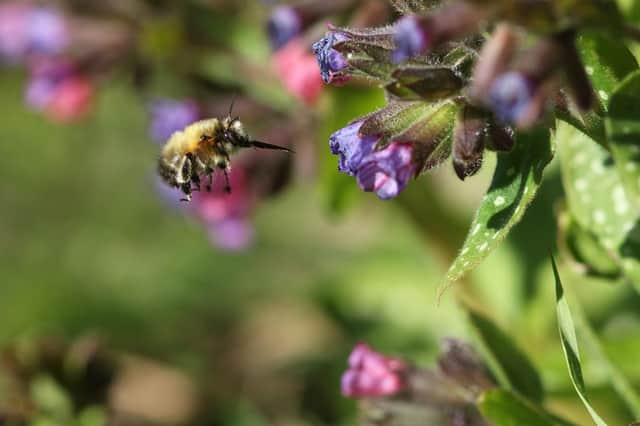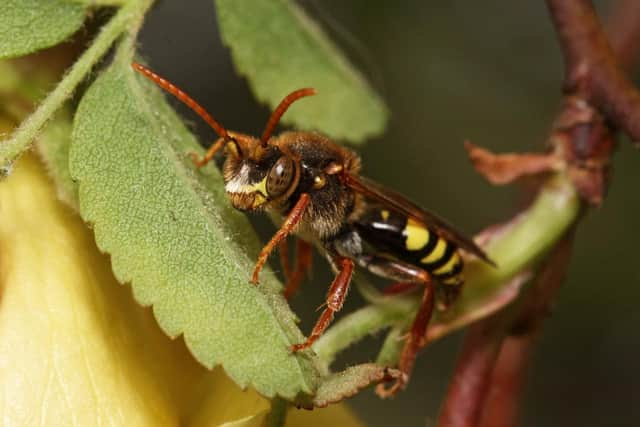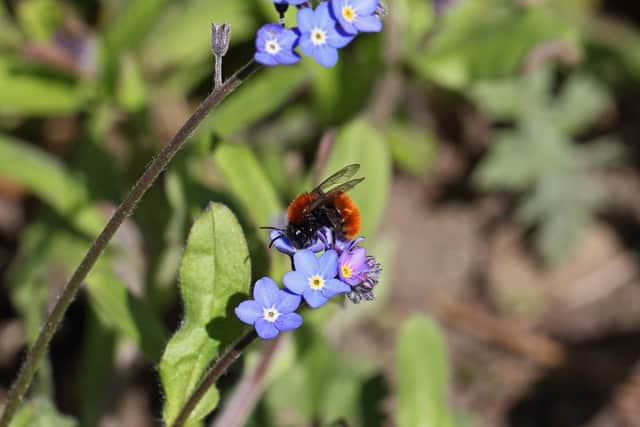Nature Notes: Amazing insects that are truly indispensible
This article contains affiliate links. We may earn a small commission on items purchased through this article, but that does not affect our editorial judgement.


Despite this, it has been quite bright and sunny so when sheltered from the nipping north breeze, it soon warms up enough to get some insects on the wing.
In our garden, lungwort, honesty, forget-me-nots, wallflower and flowing currant are all attracting a small selection of different kinds of bees.
Advertisement
Hide AdAdvertisement
Hide AdIn the UK, most will be surprised to know that we have over 270 species of bee but from that number only 10 per cent are the bumblebees and honeybees we are familiar with.


The rest of that number are made up of cuckoo bees, solitary bees, smaller social bees and even a few that are yellow and black like wasps.
When we hear on TV and in the press about bees being the best pollinators, giving us the fruit and crops we need, we assume this is the honeybee and bumblebees, but it is the smaller solitary and mining bees that are more efficient at gathering pollen and spreading it between other flowers.
Honey and bumblebees gather pollen in sacks on hind legs that is packed in mixed with a bit of liquid to pack it down.
Advertisement
Hide AdAdvertisement
Hide AdIt is then essentially no good for pollinating other plants. This is done by the loose pollen on the outer fur and body of the insect.


In the smaller bees, they carry pollen in longer hairs on their legs and body so making it much easier to distribute.
Most gardens will have visits from a selection of these small bees but they go under the radar as they zoom around low to the ground or through shrubs quite quietly.
Around our garden this week, there have been four species of bumblebee plus the less obvious smaller hairy-footed flower bee, a round furry mining bee that digs a hole in bare soil or uses a hole in a wall to nest.
Advertisement
Hide AdAdvertisement
Hide AdUntil 2020, these charming little bees were very rare in Northumberland Since then, there has been a real surge in numbers and this spring, they are being seen in gardens locally from Warkworth to Seahouses, so keep a look out.
The males are buffy brown with a white face, the females plain black with orange back legs.
Another attractive small bee that is really hard to keep an eye on, it moves so fast, is the tawny mining bee. The male is just a small brown insect but the females are a bright russet colour.
You can see them crawling around any bare patch of soil, often in lawns where they will dig a tiny burrow to nest in.
Advertisement
Hide AdAdvertisement
Hide AdA similar, but not quite as bright, is the buffish mining bee, again furry but more golden buff than orange.
I saw my first ones in the garden recently so they are there to be looked for.
Here we have the red mason bee, a common tiny bee that lives in the soft mortar of stone walls in loose colonies. It is very small, with a reddish abdomen that is blunt ended.
The last ones to watch for are the ‘waspy’ looking ones, the nomad bees. These are parasites of the mining bees so where there is one, there will be the other. I find them commonly on the flowers of our ‘canary-bird’ shrub rose.
Enjoy your garden bees in all their wonderful forms. We can’t do without them.
Report by local naturalist Stewart Sexton. Twitter @Stewchat or follow Stewchat on www.boulmerbirder.blogspot.com